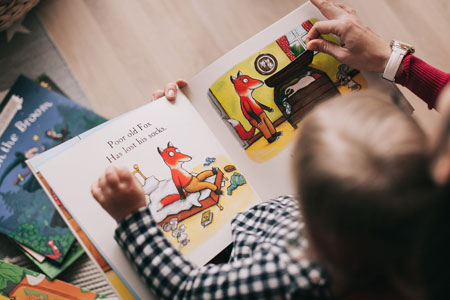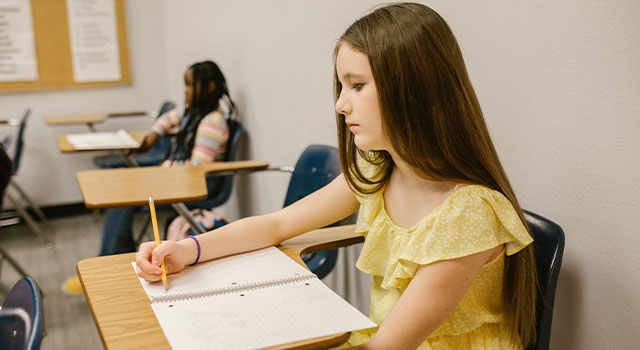
Vision Therapy Can Improve Reading Skills In Children
Approximately 75% to 90% of children’s learning is acquired through vision. Therefore, any visual system obstruction or deficit can limit a child’s potential to achieve their full capacity.
Fortunately, A-Ha Vision offers a vision therapy program that can enhance children’s visual skills and improve their reading abilities and academic performance. Parents can arrange a functional vision evaluation with Dr. Shirley Ha to assess their children’s visual skills.
What is the Difference Between Good Eyesight and Healthy Vision?
School vision screenings only assess your child’s visual acuity, meaning how clearly they can see objects at a given distance. A child might have 20/20 eyesight but not perfect vision. In fact, many children pass school vision screenings with flying colors and may have visual skill deficits that are hindering their scholastic achievements.
In simple terms:
Eyesight refers to visual acuity or sharpness of vision.
Vision refers to a more dynamic and interactive process, a complete information processing system that includes accurately and efficiently processing incoming visual information to understand the world.
Many people are unaware that 17 visual skills are necessary for succeeding in reading, learning, sports, and life.
How Does Each Visual Skill Contribute to Functional Vision?
- Eye Movement Control – To move both eyes together to point at a target or follow a path, such as a line of text
- Simultaneous Focus at Far – The ability to form a clear image of something in the distance
- Sustaining Focus at Far – Maintaining a clear image of something in the distance.
- Simultaneous Focus at Near – forming a clear picture of something close at hand
- Sustaining Focus at Near – Focusing on something near the eye and keeping a clear image of it
- Simultaneous Alignment at Far – Focusing on the same distance point with both eyes
- Simultaneous Alignment at Near – When looking at something up close, align both eyes at the same point
- Sustaining Alignment at Near – In close view, line up both eyes at the same point
- Central Vision (Visual Acuity) – Here is where the “20/20” vision comes into play!
- Peripheral Vision – With your eyes pointed forward. You can see what’s on either side of you.
- Depth Awareness – Understanding the distance between objects (also known as depth perception)
- Color Perception – The ability to distinguish different colors (for those who are not color blind)
- Gross Visual-Motor – Through the use of your vision, you can move through space without bumping into anything
- Fine Visual-Motor – You can use your vision to do small and close-up tasks with accuracy, such as writing, sewing, texting, and doing other small tasks
- Visual Perception – Being aware of your environment and what’s happening around you (in your visual field)
- Visual Integration – When you combine your vision and your other senses, such as reading while walking on a balance beam, you can accomplish complex tasks
How To Identify If Your Child Has Vision Dysfunction
Visual problems are hard to detect, especially in children, since they may not complain about their vision or lack the verbal skills to communicate what they’re experiencing.
There are several ways that poor visual skills can manifest in addition to reading difficulties. These are a few common warning signs:
- Behavioral issues due to frustration.
- Not reading at grade level.
- Difficulty concentrating, or they can’t stop fidgeting.
- Reluctance to attend school or complete their homework.
- Shies away from reading aloud in the classroom or even avoids it altogether.
- Difficulty Summarizing or remembering what they just read.
- During reading-related activities, teachers may notice your child taking frequent bathroom breaks.
- Frequently Squints, tilts, or blinks when looking at distant objects like a blackboard.
Consider calling A-Ha Vision for a functional vision assessment if you observe any of the above behaviors in your child.
A recent case study on a patient who completed her vision therapy course highlights the benefits of vision therapy for children.
Problem: Amy faced challenges with her schoolwork and started doubting her intellectual abilities. She began experiencing headaches while reading and sometimes covered one of her eyes. She found maintaining her place while reading challenging and had better comprehension when someone else read to her.
Evaluation: According to an initial eye examination, her visual acuity was 20/20. The results of Amy’s specialized vision testing revealed that her eye-tracking and focusing abilities became unstable while she read.
Solution: Vision therapy helped her improve her eye-focus capabilities and control her eye movements. Amy’s mother reported that her daughter had improved two grade levels in reading and math. She hasn’t had a headache for two months and no longer feels frustrated due to slow learning.
How Can Vision Therapy Improve Reading Skills?

Vision is a learned skill — meaning it can be trained and often responds well to training because of the brain’s neuroplasticity. A study published in the Journal of Learning Disabilities found that 12 vision therapy sessions enhanced reading abilities among sixth graders with subpar reading levels. Observations show a 220% improvement in attention and reading after vision therapy.
Moreover, retained primitive reflexes can also affect a child’s school achievements, confidence, and self-esteem.
A clinical trial examined the relationship between Visual Skill Deficits (VSD) and retained primitive reflexes and found that the retained primitive reflexes of children ages 6-14 are significantly correlated with vision skill deficits
What are Retained Primitive Reflexes?
The primitive reflexes are the actions that a baby performs as a result of sound or movement, such as crawling, reaching, and grabbing things. These movements indicate healthy development in children.
Within 5-7 months, the baby’s brain matures and these basic primitive reflexes should disappear.
How does vision therapy help?
A vision therapy program is a customized program of exercises aimed at improving the maturation of the baby’s brain and neural pathways.
Children can integrate these retained reflexes using rhythmic movement training techniques, mimicking a developing infant’s movements.
The body is able to resolve many behavioral and learning issues caused by retained primitive reflexes after integrating these reflexes.
Since vision is connected to the brain, it is important to address the issue when our brains are not fully developed. Vision therapy addresses retained primitive reflexes, making it the most comprehensive method of resolving problems.
To find out if your child is not reaching their academic potential due to a vision problem, contact A-Ha Vision now to schedule a functional eye evaluation. Make a wise investment in the future of your child with vision therapy.
We serve patients in Oakville, Burlington, Halton, Mississauga, Ontario, and the surrounding areas.





